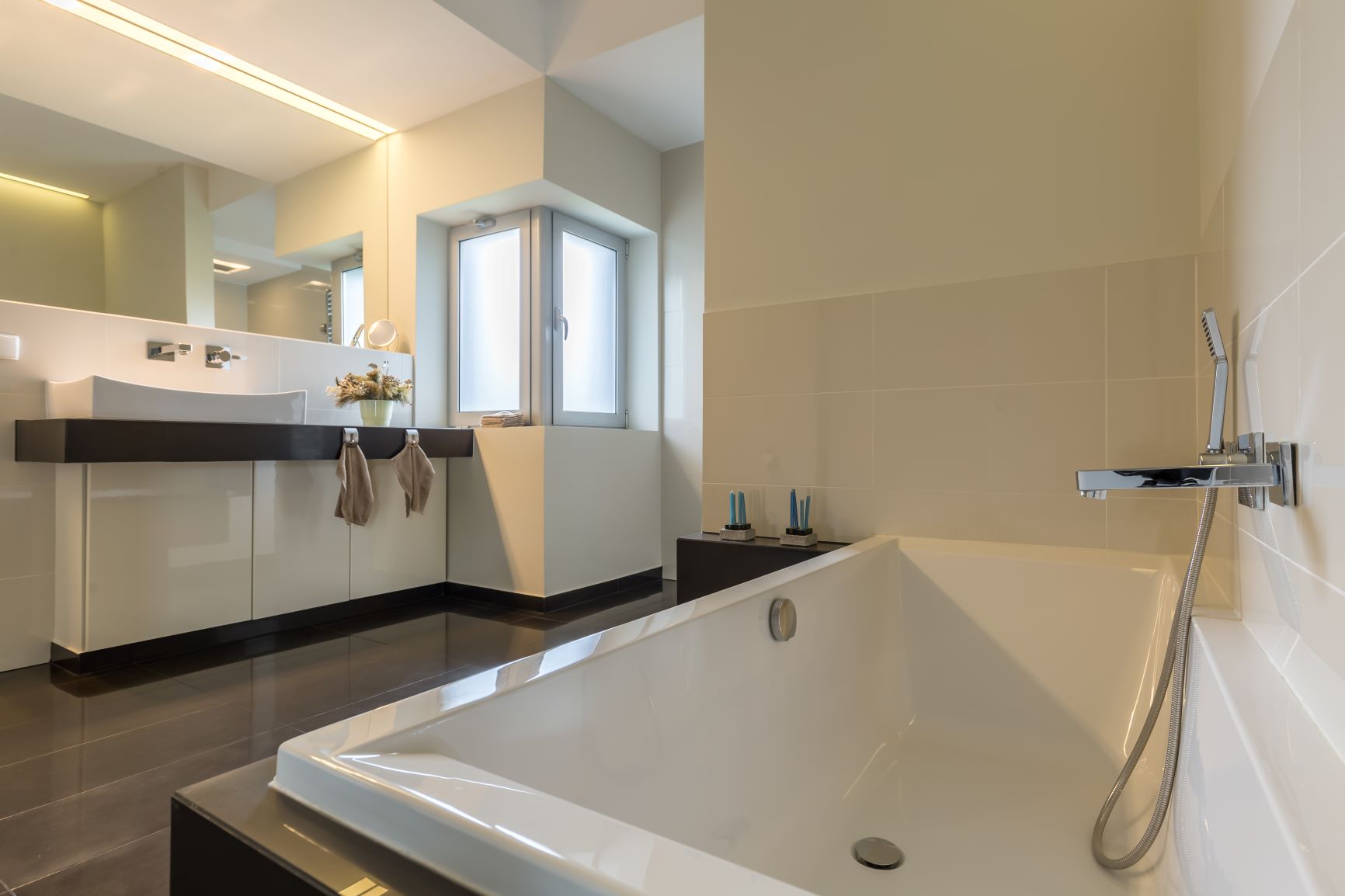One of the most frequently used and scrutinized rooms in the house is the bathroom; a well-planned out and completed bathroom remodeling will render years of aesthetic functionality and impress even the most discerning visitor to your home.
Steps to Take Before Selecting Bathroom Design
Before you consider details such as materials and bathroom remodeling costs, you need to formulate a bathroom remodeling idea on which to center your plans. Do this by observing other bathroom designs; at friends’ houses, in magazines, or on the internet. Make a list of those features you most like and those you do not.
Ask yourself questions such as: Will the bathroom be designed for enhanced relaxation or practical functionality? Will efficient storage need to be incorporated into the design? Do I want to create a mood with the lighting? Will I be enlarging the bathroom, or formulating an idea for remodeling a small bathroom? How will the bathroom primarily be used?
If increased relaxation is the focus of the design, you may want to include specialized areas within the room design. You may want to have subdued lighting in the tub area, but increased lighting by the vanity and mirror for shaving and applying make-up.
You may want to include a dressing area with seating. If more than one person will be using the bathroom at the same time, you may want to include separate sinks and multiple mirrors.
If space and functionality are important factors, then the design must emphasize well-planned storage. Utilize cabinets, shelves, and stylish containers for keeping necessities in the room, to avoid clutter.
Bathroom Remodeling Cost Considerations
Bathroom remodeling cost is an important factor in formulating your bathroom remodeling idea. Therefore, a budget should be developed for the project. Carefully project cost requirements not only for the project but for unexpected “emergency” costs, as well.
Before selecting a contractor, prudent homeowners will have a list of questions ready to ask the contractor. For instance, “<i>What work, if any, can I do to help cut costs</i>,” and “<i>Will I save money if I purchase needed materials myself</i>?”
While it is true more technical aspects of the project such as electrical wiring, plumbing, and tub/shower kit installations are best left to professionals, some demolition and prep work can be handled by the homeowner.
When selecting a contractor, network with friends and other persons who have recently had a bathroom remodeled to get references for local contractors. The Internet is another useful source.
Summary
Before making any decisions, thoroughly research all aspects of your project such as permits, contractors, structural changes, materials needed, time frame, and all costs involved.
Rule-of-thumb: set aside 20% of the total bathroom remodeling projected budget to cover emergencies or unseen costs.
Lastly, enjoy the fun and excitement of creating your bathroom remodeling idea, from start to finish. And enjoy the years of satisfaction offered by the finished project!
![]()

